Bethlehem is just six miles (10km) south of Jerusalem, and is a major tourist attraction for pilgrims and visitors alike. Reputed to be the birthplace of Jesus, the town is charming despite its tourist-centred commercialism. The Church of the Nativity is the focal point for visitors, and is erected over the site of Jesus' birthplace.Bethlehem is also a wonderful place to see a variety of monasteries that represent different Christian denominations. Christmas is celebrated on three separate dates in accordance with the Catholic Church calendar, the Eastern calendar followed by the Armenians, and the Julian calendar followed by the Greek Orthodox and Eastern churches.For further exploration of the town's cultural diversity and to learn something about its secular history, visitors should stop at the Bethlehem Museum, which was established by the Arab Women's Union to celebrate the area's Palestinian cultural heritage. The exhibits include everything from traditional household items to clothing, jewellery and old photographs, and allow insight into the town's domestic history.Travellers should note that Bethlehem is in the West Bank and vulnerable to regular outbreaks of violence between Jewish and Palestinian factions. The security situation should be checked before contemplating a visit.
Website : www.bethlehem-city.org
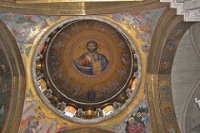
As the site of Jesus' crucifixion, burial and resurrection, the Church of the Holy Sepulchre is the holiest Christian place in Jerusalem. Emperor Constantine constructed it in 326, and its structure has suffered frequent damage over the centuries. Repairs have been undertaken by the religious communities that administer it.The Church contains the Chapel of Golgotha, and the three Stations of the Cross where Jesus was crucified. The Sepulchre itself marks the place of his burial and resurrection.This incredible church is filled with treasures and should be of great historical and architectural interest regardless of one's religious beliefs. It is an absolute must for Christians. The church is home to several Christian denominations.The church is not a museum and does not display a lot of information. For this reason, travellers should either join a good tour or do some research before visiting. Also, the church can get very crowded and visitors may have to queue for a long while. It's a good idea to arrive early in the morning. Those visiting in the hope of a tranquil environment in which to pray and worship may be disappointed if they visit at a busy time. The tomb can only be entered by five people at a time so there is usually a long queue for this privilege as well.
Address : Via Dolorosa, Old City.
Website : https://churchoftheholysepulchre.net
Transport : Bus to Jaffa Gate; from there, a walk through the Old City.
Opening times : Daily from 5am to 9pm (April to September), and 5am to 7pm (October to March).
Admission : Free
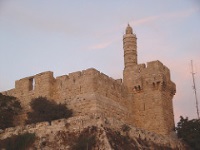
Called the Tower of David, Jerusalem's Citadel is a medieval fortress with architectural elements from later periods. Its tallest tower, the Phasael, is the best place to appreciate its magnificent view of the city.The Citadel contains the excellent Museum of the History of Jerusalem, which displays 4,000 years' worth of the city's past in its rooms and courtyards. Free tours of The Citadel and museum are conducted in Hebrew on Tuesdays at 10:30am, and in English every day except Friday and Saturday at 11am. The 'light and sound' show held almost nightly is also a delightful way to learn about the history of Jerusalem.The Citadel of David is a great first stop for visitors to Jerusalem, as it covers the city's history from biblical times to the present in a very accessible and interesting way. English and Hebrew captions and audio guides are available for visitors who aren't with tour groups.Visitors will also encounter some fascinating architectural elements. Those who struggle with steps should note that there are a lot of them at this site, and that seeing the place properly requires a fair amount of climbing.
Address : Jaffa Gate
Website : https://www.tod.org.il/en
Transport : Line 38. Lines 13 and 18 stop at King David Street.
Opening times : Saturdays to Thursdays: 9am-4pm Fridays: 9am-2pm
Admission : NIS 40 for adults, concessions available.
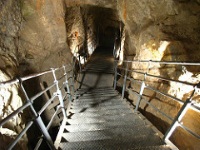
Hezekiah's Tunnel is an absolute must-see for those who like to combine their sightseeing with a real sense of discovery and adventure. The tunnel, which is about 2,700 years old, was built by King Hezekiah in preparation for an invasion by the Assyrians. His plan was to shut down springs based outside the city, and redirect water through a tunnel under the city walls. In this way, he looked to protect Jerusalem's precious water supply and outlast the invaders.The tunnel is made all the more remarkable when considering its middle section, which zig-zags wildly. It was constructed in this way because two teams of diggers (each operating from a different end of the tunnel) were trying to meet by the sound of the other's picks working against the rock.
Address : Hashiloah Road.
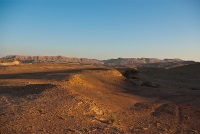
The Makhtesh Ramon (Ramon Crater) is a fascinating geological site in Israel's Negev Desert. Located about 53 miles (85km) south of Be'er Sheva, it owes its form to millions of years of erosion and weathering following the ocean's withdrawal, rather than a meteor impact. These days, the vast crater is housed within Ramon National Park: one of Israel's most popular ecotourism destinations.Shaped like an elongated heart, the crater is a magnificent sight and a powerful reminder of the region's incredible age. A variety of indigenous plants and animals populate the area, including the Nubian ibex, striped hyena, Arabian leopard and Dorcas gazelle.Many hiking trails lead to the bottom of the crater, where visitors can see the ruins of prehistoric Khan Saharonim. Nabatean traders stopped there while travelling the Incense Route more than 2,000 years ago.All in all, the Makhtesh Ramon should be a bucket-list item for travellers who value silent and expansive moments in nature. They'll also find wonderful star-gazing opportunities at the nearby town of Mitzpe Ramon.
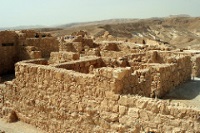
The mountaintop fortress of Masada (sometimes spelled Massada) is one of Israel's most popular and remarkable tourist attractions. Situated in the Judean Desert and overlooking the Dead Sea, this site is where 967 Jewish Zealots rose against Rome in 66 AD, taking their own lives when defeat seemed inevitable. King Herod built the ancient fortress they defended against Roman siege.Visitors can still explore the ruins of ancient structures and palaces, and see the remains of the most complete Roman siege system in the world. The Roman camps, siege wall and ramp are still clearly visible.Masada is a UNESCO World Heritage Site and a place of profound interest for military-history buffs. Visitors can reach the top by cable car or by hiking up the Snake Path. From there, they can enjoy breath-taking views of the Dead Sea and the surrounding desert.The Masada Sound and Light Show recounts this dramatic history with special pyrotechnic effects, and takes place in a natural amphitheatre on the west side of the mountain. The Yigael Yadin Masada Museum is also fascinating.
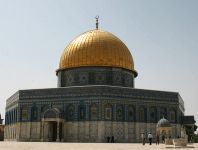
Temple Mount is tremendously important to Jews, Muslims and Christians alike. Located within the Old City's walled section, its glinting, golden Dome of the Rock is easily Jerusalem's most distinguishable feature.From a Jewish and Christian perspective, the large rock is said to be where Abraham offered his son Isaac up for sacrifice. Many believe that the First Temple once housed the Ark of the Covenant. Visitors should also note that the Israeli government prohibits non-Muslim prayer on the site.Muslims believe that Muhammad ascended to heaven from the same rock. For this reason, they built the Dome over this site in the 7th century. Muslims know it as the Noble Sanctuary or Al-Haram al-Sharif, and it's one of the three most important sites in Islamic culture. The Al Aqsa Mosque and the Islamic Museum are also located on the Temple Mount.Tragically, due to the site's great importance to three religions, Temple Mount is frequently a focal point for religious tension in Jerusalem. Travellers should investigate the situation before visiting.
Address : Temple Mount, Old City
Transport : Bus to the Dung Gate.
Opening times : While the complex is open to all people, non-Muslim visitors will NOT be allowed entry into the building of the Dome of the Rock. Visitors should also note that Temple Mount may be closed to visitors during times of turmoil or religious conflict in Jerusalem. Generally, it is open Saturday to Thursday from 7.30am-11am and 1.30pm-3pm in summer; and 8am-10:30am and 12:20pm-2pm in winter. Closed on Fridays and during prayer times.
Admission : Admission to Temple Mount is free, but admission is charged for access to the Dome of the Rock, Al Aqsa Mosque and Islamic Museum.
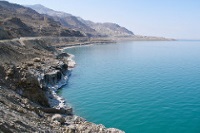
The Dead Sea and its immediate environment have many natural wonders. Wellness travellers are most interested in the high salt and mineral concentration found in its waters. Besides enabling visitors to float effortlessly on the surface, the mix gives the region's black mud tremendous therapeutic properties. Also, as the water is wonderfully warm, swimming is possible all year round.Otherwise, the Dead Sea region boasts some fascinating archaeological sites, with traces of Persian, Greek, Roman and other civilisations remaining. Notable historical locations include the notorious biblical city of Sodom, which was destroyed along with Gomorra.
Transport : Bus 444 or 486 from west Jerusalem.
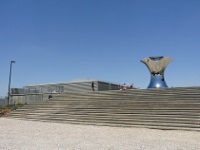
The Israel Museum has achieved world-class status. Its remarkable collections include displays of archaeology from the Holy Land, a comprehensive compilation of Judaica and the ethnology of Jewish people, plus a fine-art collection encompassing Old Masters and renowned contemporary works. Many temporary exhibitions, publications, lectures and educational activities form part of the museum's cultural programme.The Dead Sea Scrolls, which date from between the 3rd century BCE and the 1st century CE, are perhaps the museum's most exciting artefacts. A young Bedouin shepherd famously discovered them in a cave in 1947.The Museum's Art Garden is another great attraction. Designed by the Japanese-American sculptor Isamu Noguchi, it is a fusion of Zen landscaping that incorporates the area's natural vegetation, such as fig trees, olive trees and rosemary bushes. Within this picturesque setting, visitors can view famous sculptures by Rodin, Bourdelle, Maillol, David Smith, Henry Moore, Richard Serra, Sol LeWitt and James Turrell.
Address : 11 Ruppin Boulevard, Hakyria, near the Knesset (Israeli Parliament).
Website : www.imj.org.il
Telephone : +972 2 670 8811
Transport : Buses 9, 17, 24, 24a, and 99
Opening times : Sunday, Monday, Wednesday and Thursday: 10am–5pm Tuesday: 4pm-9pm Fridays and Holiday Eves: 10am–2pm Saturdays and Holidays: 10am-5pm
The Via Dolorosa (Road of Sorrow) is the route Jesus is said to have followed as he carried the cross to his crucifixion. There are 14 stations along the way commemorating different events, starting at Lion's Gate in the Muslim Quarter of the Old City, where Jesus was convicted by Pontius Pilate, and ending at his tomb inside the Church of the Holy Sepulchre in the Christian Quarter. A steady stream of pilgrims remember and honour Jesus' sacrifice by walking the Way of the Cross every year.Every Friday at 3pm, priests lead a procession and prayers are said at each station. A semi-circle of pavement stones marks every stop, and a wall bears the station's number in Roman numerals. Some stations have additional inscriptions.Many churches belonging to different Christian denominations line the path. Visitors usually enjoy entering as many as possible and comparing different interpretations of the Via Dolorosa and of Christ. There are also a few secular attractions along the way, with shops, cafes, restaurants and other sights and distractions for those who want a less solemn religious excursion.Historically speaking, the pathway is unlikely to be the exact route walked by Jesus. Still, it is a profound walk of faith for many Christians, and an interesting cultural experience.
Address : Via Dolorosa, Old City
Transport : Bus to Lion’s Gate.
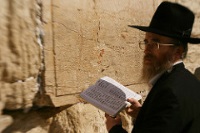
The Western Wall (Wailing Wall to non-Jews) is the most sacred Jewish prayer-site in the world. Thousands of worshippers gather year-round to pray here, and to place folded written prayers into the wall's crevices. The wall is all that remains of the Second Temple of Jerusalem, built by King Herod in 20 BCE. It is made up of enormous stone blocks, and endures as a tribute to the scale of workmanship in past eras.Following Orthodox Jewish practice, the praying sections have been separated for men and women. Men are required to wear a skullcap (kippah) and women must be modestly dressed. On Fridays (Jewish Sabbath) the men's section pulsates with the faithful's songs and prayers. In principle, the whole area is an Orthodox synagogue. The wall is also sacred to Muslims, who believe that it is where the prophet Muhammad tied up his winged horse, al-Buraq, before ascending into heaven.For those interested in the historical and architectural aspects of the Western Wall, an interesting tunnel tour takes visitors through excavations along the Wall. It is much more extensive than is visible from the famous square.Visitors should be prepared to go through security and have their bags checked at the site. Also, photography is not allowed at certain times, like when there are holy events.
Address : Temple Mount, Old City
Transport : Bus to Dung Gate.
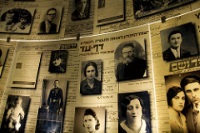
The museum documents and commemorates the events of the Holocaust, and also furthers education through ongoing research into the period. In this way, it honours the millions of Jews who died during World War II.Visitors will find the world's largest and most comprehensive collection of Holocaust material, which includes documents, photographs, films and videotaped testimonies of survivors. These can be read and viewed in the allocated rooms. Engaging with the information is a sobering, emotional experience.The Hall of Names recognises the Holocaust's six million victims, and is an inspiring tribute to them. Symbolic gravestones display information from the 'Pages of Testimony', which were the deceased's biographical records. The library contains an impressive collection of material in many languages.Regarding its scope, Yad VaShem chronicles the Holocaust's history from the implementation of anti-Jewish policies to the mass murders in concentration camps. The display includes photographs, artefacts, documents and audio-visual material. An important collection of Holocaust art is also displayed in Yad Vashem's Art Museum. The International School for Holocaust Studies and Holocaust Research provides education and ongoing research on the Holocaust at national and international levels.Otherwise, the Yad Vashem experience includes the Righteous Among the Nations exhibition, which honours the non-Jews who risked their lives to save Jews. Visitors can also see the Encyclopaedia of Communities. It's a record of the historical-geographical communities of Jews destroyed or damaged during the Nazi regime.Some visitors may find the museum distressing. Children under 10 are not allowed to enter.
Address : Har Hazikaron
Website : www.yadvashem.org
Transport : By bus to Mt. Herzl, on Herzl Boulevard

Travel Guide powered by Word Travels, copyright © 2023 Globe Media Ltd. By its very nature information in this travel guide is subject to change at short notice and travellers are urged to verify information on which they're relying with the relevant authorities. Neither Globe Media Ltd nor Travel Vogue can accept any responsibility for any loss or inconvenience to any person as a result of information contained above.